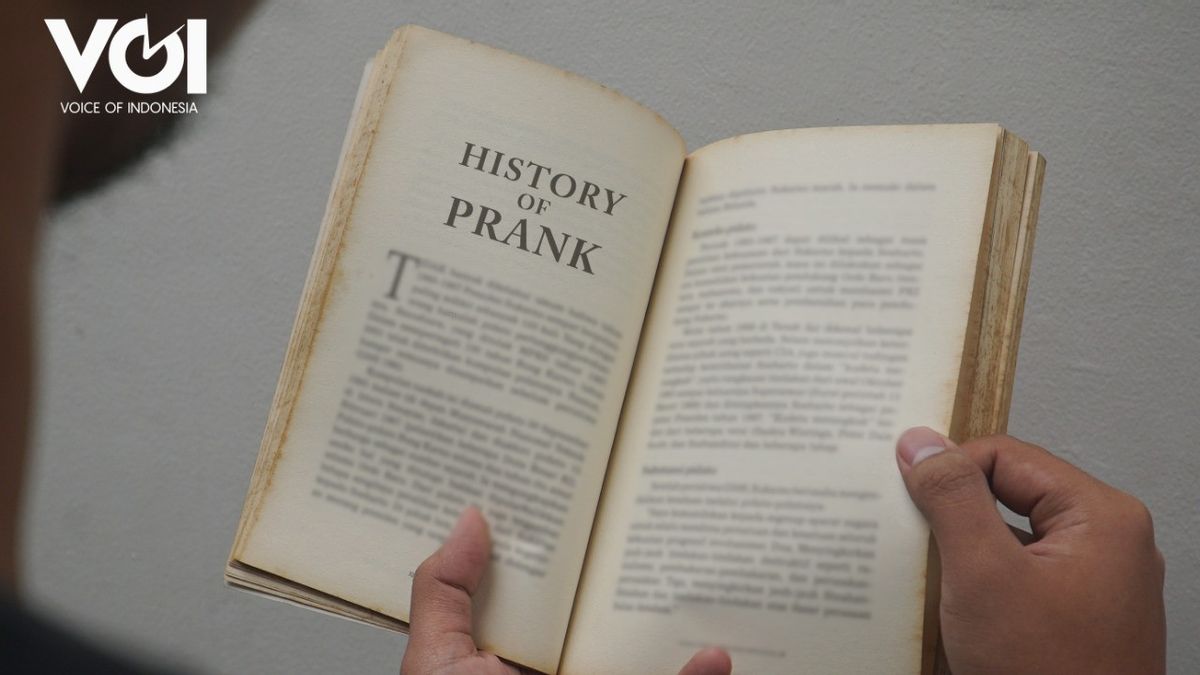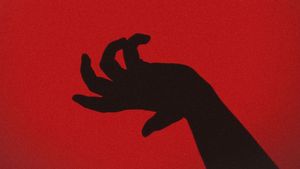In "Silly YouTubers Who Don't Even Understand What Prank Is," we have discussed the theory of prank which shows that many YouTubers have the wrong idea of prank. Continuing the VOI series "Prank! Prang! Prong!", Through this article we will find out the origin of pranks.
In theory, pranks are often called practical jokes, aka practical humor. The reason is, there is always action in pranks. Whoopee cushion prank, for example. Prank occupying the farting sound balloon is one of the most practiced in the United States. Classic.
Etymologically, the term "practical jokes" was first used in 1804. Before that, jokes or similar jokes were called handicraft jokes. From a cultural point of view, it is impossible to talk about pranks without relating it to April Fools' Day culture, aka April Fools Day.
A number of literatures also link the origins of pranks to the history of April Moop celebrations. Indeed, many versions explain the origins of April Fool's Day. One of them is the one appointed by the National Post. In that version, prank is said to have been born at the end of the 13th century, to be precise in 1392.
At that time, British literary legend Chaucer wrote a story about a mischievous fox who tricked people by adding a date in March to the 32nd day. Chaucer wrote the story in his famous book, The Canterbury Tales.
Many people believe Chaucer's joke meant his way of welcoming April 1st. A way that Chaucer might find pleasing. However, other opinions expressed by many academics believe it could just be a typo incident.
In another version, April Fools' Day is believed to have been born in the 16th century. To be precise, when the Gregorian calendar was introduced. At that time, there were still many people who didn't realize it because they still followed the Julian calendar. They were fooled by the change in date.
Despite the debate over when April Fools' Day started, the celebrations have created all kinds of famous jokes over the years. One of the most successful and famous jokes is a prank by a Swedish television station.
In one of its programs, the television station said it would divulge the technology secrets they kept. The television program invited people to cover their black and white television screens with nylon cloth.
The move, according to them, will change the colors on television to become colorful. The prank managed to deceive thousands of Swedes en masse. Television stations seem to have a big role in spreading prank culture in the world.
Another prank that is also the most famous ever made by the BBC. In its 1957 broadcast, the BBC featured a picture of a man harvesting spaghetti from a tree. The BBC also teaches its viewers how to plant spaghetti trees. Of course it's a mere kibul.
Apart from the spaghetti tree, the BBC has also claimed that the Big Ben clock in London, England will turn digital in 1980. In the end, the same.
VOI's technology development division continues to innovate. Introducing our latest breakthrough: Smellovision. Explore what we're doing: https://t.co/M2r1TIx9cJ#voi #voiceofindonesia #jurnalismerasa #ikutikami pic.twitter.com/obwebLypHF
- voi.id (@voidotid) December 10, 2019
Oldest prank
The oldest recorded prank is in the era of the Roman Empire Elagabalus. Australian archaeologist Warwick Ball recorded the story of Elagabalus who ruled from 218 to 222 in his paper, Rome in the East: The Transformation of an Empire.
Warwick tells the story of Elagabalus' dark side as a cold-blooded tyrant who likes to party hard. Elagabalus is said to have strangled his guests at a dinner together. However, on the other hand, Elagabalus also has a side of humor.
Elagabalus showed that side when he tricked his guests. It is said that Elagabalus placed leather cushions on a lesehan table. During the banquet, Elagabalus' men leaked air out of the pillow.
The practical joke performed by Elagabalus and his men made the guests fall to the hard floor. Perhaps, this story also inspired the prank to pull up a chair someone was about to sit on.
Apart from the story of Elagabalus, other pranks have been recorded in the 15th century. Quoted from hoaxes.org, a British monk named Thomas Betson described how he fooled his own siblings.

The method is fairly clever. Betson accidentally placed a live beetle inside an apple that had been perforated. As a result, the fruit seemed to sway and move back and forth on its own. However, people who don't know even believe that the fruit is possessed by a demon.
Betson wasn't the only ignorant monk of the century. Other manuscripts provide tips on how to make a bed itchy and how to make flesh look like worms.
Then, another prank that is also often done is by pasting the writing behind the back of other people. Prank is actually rooted in British people since the 1700s.
During its development, the message in writing continues to develop. However, back in the day it appeared, most of the prank posts read: kick me!
Apart from the pasting trick, strappy wallet pranks were also born in the same era. In string purse pranks, usually someone will tie a rope to the wallet and put it on the street. Later, the wallet will be withdrawn when someone wants to take it.
Follow this edition of Writing Series: Prank! Prang! Prong!
The English, Chinese, Japanese, Arabic, and French versions are automatically generated by the AI. So there may still be inaccuracies in translating, please always see Indonesian as our main language. (system supported by DigitalSiber.id)













